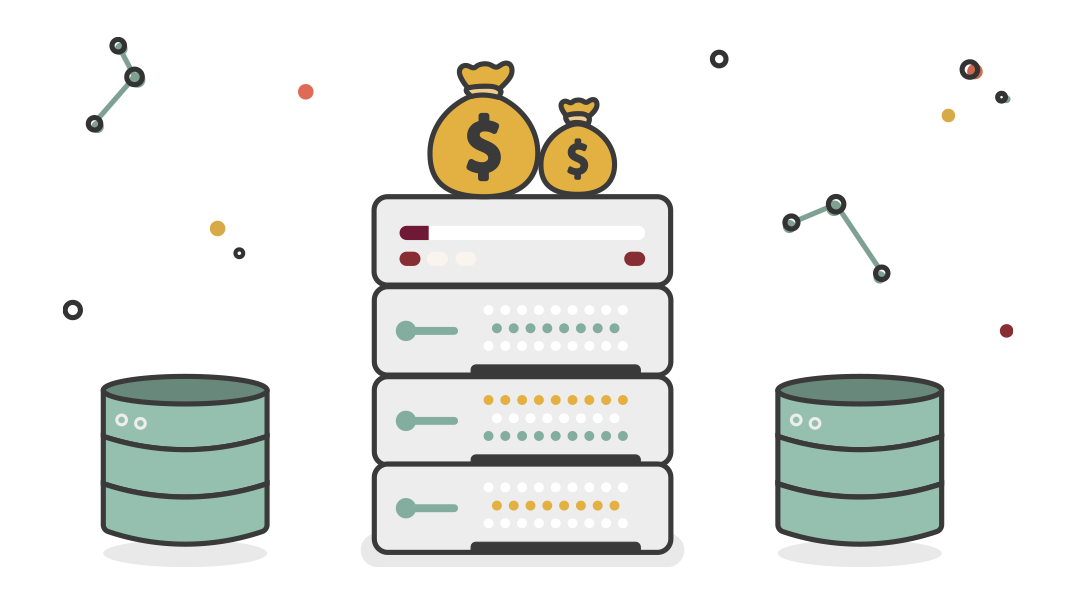Maximizing Value
A core focus for Technology Services is delivering a clear return on investment for the university and System. Whether we’re working to save time or money, we are dedicated to maximizing value for our customers and partners.
Looking Forward
Uniting Technology Services across campus
Technology Services united more than 800 technology professionals across campus to support a centralized organizational structure. By unifying campus IT, Technology Services will be able to streamline processes and evaluate technology decisions across the organization.
Careers
Skills inventory to develop and align team

Technology Services developed an inventory to identify the IT skill sets of employees across campus. The inventory will be used to develop and align personnel within the Technology Services team. To date, based on the responses from 574 IT professionals surveyed, the skills inventory demonstrated the top 5 skills held represent programming, server administration, endpoint management, project management and customer service. In addition, the survey provided insight on areas where growth opportunities exist through demand management, systems development management, learning delivery, quality management and portfolio management.
This inventory allows Technology Services to identify the various strengths, skills, competencies and opportunities at an organizational level. In addition, this inventory allows for a focused understanding of each employee’s aspirations for career development, whether it be technical or managerial.
The most requested training categories include macOS and iOS support (JAMF and Apple Hardware Support), leadership (supervision, governance, organizational leadership and diversity), project management (PMP, Agile and Scrum), programming (Python, JavaScript, PowerShell, .NET, C++, C# and Swift) and IT frameworks (ITIL, Six Sigma and Lean).
Careers
Providing professional development opportunities
Technology Services’ professional development enhancement program provides career growth opportunities for all IT employees. This program is especially important with the recent unification of IT professionals across campus. Each employee is required to take four courses: one on project management, one on emotional intelligence and two additional elective trainings fulfilled through official Technology Services’ Speaker Bureau or Technically Speaking events, outside training and LinkedIn Learning courses, or the Technology Services book study group. This program is intended to encourage career growth opportunities for technology professionals and equip them with the knowledge and skills needed to address technology challenges.
Automated document processing simplifies degree planning, saves students’ time
Time is valuable, especially for busy graduate and professional students. Processing degree plans and any changes that might be necessary is not a quick or easy feat. Students must obtain signatures from advisors, department heads and other faculty relevant to the approval process. This can take students weeks, especially when additional updates are required.
For graduate students, a delay in a degree plan approval could mean a delay in graduation. Dr. Karen Butler-Purry, former associate provost for graduate and professional studies at Texas A&M, recognized this critical need and met it head-on by implementing a cutting-edge service within the department.
With help from Technology Services, Dr. Butler-Purry and a team of software developers created the Document Processing Submission System, a custom-made service designed to pre-approve courses and automatically send documents sequentially for approval. The automated system provides a speedy and accurate approval process to ensure delays are less likely to occur.
For the last decade, software developers in Technology Services have consistently provided quality service to the Graduate and Professional School, said Dr. Butler-Purry.
Michael Phillips and Jeanifer Anderson in Technology Services, have seen their work make a difference. “It definitely saved a lot of time and a lot of frustration on both ends,” said Michael. “Hosting such a seamless processing system is invaluable for busy groups like Dr. Butler-Purry and her team, and we know that all graduate students certainly appreciate the time and effort they save during an already hectic time in their lives.”
Over the last 10 years, more than 90,000 degree plans and change petitions were entered with more than 450,000 approvals. The Graduate and Professional School has saved in excess of 180,000 hours of unnecessary data entry and processing with the automated system now in place. What would once take days or even weeks now only takes minutes.
Michael takes the responsibility of leading this project seriously. Especially with the fact that today, more than ever before, students expect to do things online and a tool like the Document Processing Submission System is essential to meeting their needs.
The Graduate and Professional School remains in constant contact with Technology Services to ensure the system performs appropriately. The software development team quickly responds to any changes in their business process or makes needed updates to improve and enhance the performance of the application.
Dr. Butler-Purry agrees. “Not only did Technology Services help us create this custom application, but they have continued to work with us to improve the system by adding new features to make document submission easier for our students.”
Technology Services saves the university $1.4 million with Exadata

Texas A&M Technology Services will save the university nearly $1.4 million over four years by moving from separate Oracle database and storage products to the Oracle Exadata Cloud@Customer System. This approach reduces maintenance costs while allowing for service excellence to be further enhanced as Technology Services can patch Linux OS and Oracle software in real-time, without campus members experiencing any outages. Technology Services application administrators still apply Banner patches; however, they no longer need to coordinate with the operating system and Oracle patching. The key to reducing costs with the Exadata Cloud@Customer System was understanding how new Exadata technology and Oracle’s pricing model could be leveraged to maximize the benefit to Texas A&M University.
Obtaining license keys for Red Hat Linux 8 VM’s
The Office of the Vice President of Research and Technology Services collaborated on a new enterprise contract with Red Hat Technology Services. This resulted in an immediate annual operational cost savings of $5,000 for the student information system. This immediate benefit will continue for the next four years, resulting in a $20,000 savings over the life of the contract.
Digitizing Q-drop leads to workload reduction
In fall 2022, Technology Services launched a Q-drop automation process in conjunction with the Offices of the Registrar and Student Success. Automating the process will result in perpetual savings of time and money year after year.
Over the past academic year, there were 22,096 Q-drops and 601 withdrawals, all of which the Registrar’s office processed manually. This manual business process consumed an estimated 5,524 personnel hours of work activity to complete. Once digitized, it resulted in a $193,340 annual reduction of advisor workload.
In addition, automating this business process removed seven out of eight steps students had to complete using the manual, paper-based approach. The new method saved students an estimated 22,096 hours of administrative activity, allowing more time to concentrate on class work.